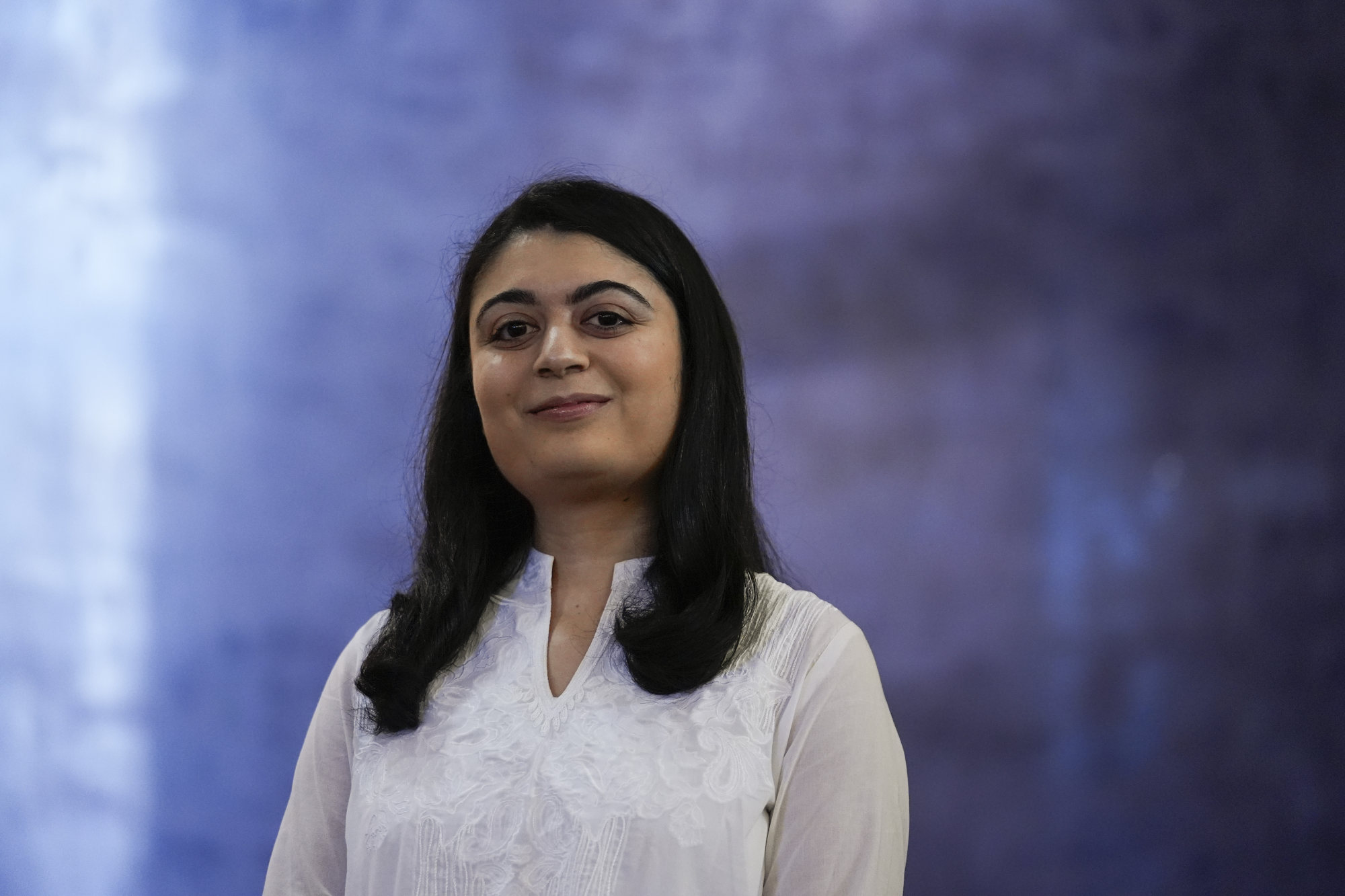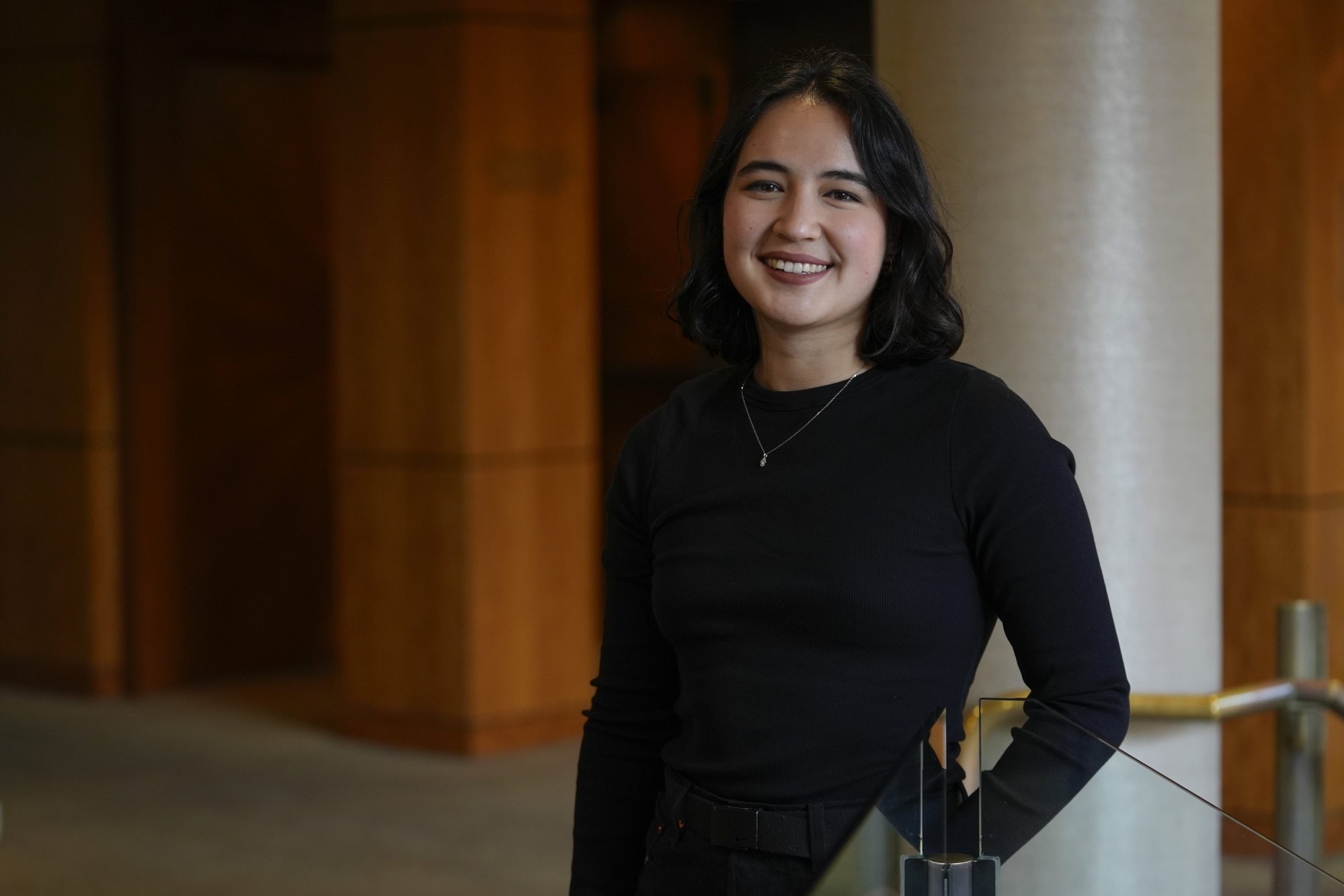Chiu is a producer on a show titled What Do I Do with All This Heritage? that will present 14 true stories showcasing the unique, often little-known experiences of Asian-American Jews.

The stage production is a collaboration between The Braid, a 16-year-old storytelling company that highlights the Jewish experience, and The Lunar Collective, which was founded in 2020 and is the only national organisation for Asian-American Jews. Chiu has roles in both groups.
Shows will run until June 9 in Los Angeles, San Francisco and via Zoom.
You never feel quite enough for everyone and you don’t feel entirely comfortable in a Jewish or Asian space
The stories capture the rich diversity among Asian-American Jews, with subjects ranging in age from 12 to 75.
The production has no sets, props or costumes. It brings these true stories to life with poignant moments, humour, romance, music, and most importantly hope and joy, Chiu says.
“This is like a nice sampler platter of what the Asian-American Jewish experience is like.”
These are the stories of four of the people featured in the production.
Leila Chomski, 23, New Jersey
“K-pop songs spoke to me because they talked about working hard to achieve success and having intellectual independence,” she says.
Chomski posted K-pop videos on Instagram and dressed like K-pop stars, wearing miniskirts, thigh-high boots and cropped tops. Her new persona conflicted with her Orthodox Jewish values.
“It made me feel lost and sad and pained,” she says, describing her helplessness at being unable to fully embrace her Asian and Jewish identities. “I spent a lot of time crying, praying to God.”
I realised I needed to be part of my Jewish community and celebrate being Jewish instead of being embarrassed about it
When Chomski was 18 and riding a bus with her mother from New Jersey to New York, she told herself that if she saw a sign from God that second she would change her life. On cue, she saw a billboard featuring a rabbi’s smiling face and the words: “Do a mitzvah [a good deed]. It’s the right thing.”
Chomski took that to heart. With the help of her rabbi, she figured out how to share her K-pop videos on social media without compromising her faith. She switched to long skirts and dresses. She stopped singing and dancing in public.
“I was finding ways to be proud of my Jewish heritage,” she says. “I realised I needed to be part of my Jewish community and celebrate being Jewish instead of being embarrassed about it. Reconciling my Asian and Jewish sides is still a struggle. I’m trying to find my way.”
Maryam Chishti, 26, New York

Maryam Chishti’s Jewish mother is from Manhattan’s Upper West Side; her father is a Muslim from Kashmir. Her parents decided to raise her Muslim and Jewish.
When she turned 11, Chishti’s parents told her she would have two coming-of-age ceremonies – a bat mitzvah and one where she recited the Shahada – the Muslim profession of faith.
“I was annoyed because I had to do twice the work preparing for both ceremonies,” she says. But it helped her see the similarities between Judaism and Islam.
“Not only do both religions worship the same God, but the diets are similar, the teachings are the same. I started to see a merging of these faiths within me. And when I felt a connection with God, it was both as a Muslim and as a Jew.”
“You never feel quite enough for everyone and you don’t feel entirely comfortable in a Jewish or Asian space,” she says. “I often have to figure out how many cards I’m going to show – Indian, Asian, interfaith, Jewish, Muslim. It has been a process of knowing that I can only be me, and that has to be enough.”
Lulu Fairman, 75, Los Angeles

Lulu Fairman was born in Kolkata, India, to Orthodox Jewish parents. Jewish migration to the city began in the late 18th century when merchants from Iraq and Syria came to what was then the seat of the British Raj. They founded a community that became the hub of the Baghdadi Jewish trading diaspora in Asia.
Her father’s family was from Baghdad; her mother’s side was from Eastern Europe. She had a traditional Jewish upbringing, but is often met with surprise when she introduces herself as an Indian Jew.
“I have friends who tell me they had no idea there were Jews in India,” Fairman says. “But I did not know there were Jews in Vietnam. So we all learn something new.”
In the production, Fairman’s story depicts her compassion, a quality which took root in the poverty-stricken city where she grew up and continues to this day through her volunteer work in Los Angeles.
When I look in the mirror, I like the person I see
Fairman learned that the mother of the woman who plays her in the production lived three doors away in Kolkata’s Jewish neighbourhood.
“I had to hold back tears when I heard that. It felt surreal and serendipitous.”
Fairman says she has found purpose in her life by helping others.
“Now, I’m comfortable in my own skin. When I look in the mirror, I like the person I see.”
Lillian McKenzie, 23, Los Angeles

Lillian McKenzie’s mother is Jewish; her father is a Korean adoptee raised by white Presbyterian parents. As a cast member, she tells Chomski’s K-pop-infused story.
“We have oddly similar but different experiences,” she says. “Both of us have found joy through dance and music.”
This show has been a big stepping stone where I now feel like a full person with all my identities
She is also telling the story of a 12-year-old girl of Chinese descent living in Boston who faced discrimination in her Jewish school and as a result, comes to realise how important her faith is. McKenzie says doing this show has helped her.
“I didn’t talk about my heritage much before because I felt not many could relate to it,” she says.
“This show has been a big stepping stone where I now feel like a full person with all my identities.”
The show is also important for non-Jewish people to see because it highlights the experiences of “people who may never be seen”, McKenzie says.
“We’ve created a community out of what people thought of as nothing,” she says. “You feel their humanness, because what’s more human than feeling that you don’t belong?”

